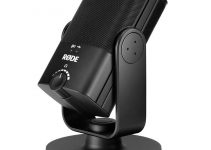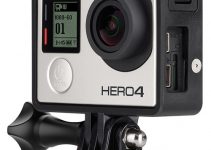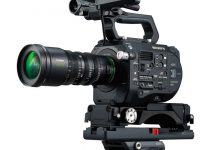Unlike the trailblazer days of the original Red One, the Red Komodo is entering a market that is loaded with competition in every possible direction. This camera has been incredibly hyped up by Red and shooters all over the world and it has lived up to all of it.
For some seasoned Red shooters, this is an excellent B or C camera option that fits into the Red ecosystem perfectly. For everyone else who is looking for an affordable camera with fantastic color, solid dynamic range, and hands down the best raw codec on the market, this one is absolutely what you’ve been waiting for!
With units finally shipping, we’re all starting to catch a glimpse of what this amazing little camera can do in the right hands. The majority of Komodo shooters will be entirely new to filming with Red cameras and the Red workflow process. Luckily for all of us CVP has put together a detailed first look at the Komodo with tests, workflow tips, and samples that simply are breathtaking.
We’ve been hearing about the Red Komodo for a very long time now, and we’re finally seeing what amazing images it can capture.
Initially, when this camera was teased in various blog posts by Red, it seemed like a boatload of hype but after we started learning more about its backstory and seeing the awesome images it can capture, we realized that it isn’t just another marketing gimmick – it is a trendsetter.
Red didn’t envision the Komodo to be a camera for the masses but rather to be more of a high-end GoPro for productions that required smaller camera bodies to go places that no large cinema camera could, but also to stay within their deliverable specs and imaging requirements.
That’s a really longwinded, run-on way of saying that action cameras just weren’t matching well with a DSMC 2 Helium camera.
The intention of this camera was to put size and image first – make the smallest camera they could, that was easy to use, with the most features, and maintained the Red look. Just looking at the still you can easily see that they succeeded.
We’ve posted a lot about the Red Komodo, and you can review all of our previous Komodo articles here where you can learn more about the specs, see comparisons with other popular cameras, and even download some raw footage to test for yourself.
Red Comparison Tests
To illustrate how the Komodo fits into the Red ecosystem, CVP have pitted the camera up against the Red Gemini, Helium, and Monstro (3 cameras in their DSMC 2 line).
The Komodo holds color well, but as you underexposure the sensor the image gets more and more green. It’s very useable at 3 stops underexposed but anything past that reveals a lot of sensor noise. The Helium and the Gemini perform similarly but with color shifts to purple, and the Monstro performs the best with the most useable underexposed imaged with the least color shifting.
For overexposure tests, the cameras were pushed to go 6 stops overexposed. In this test, the Komodo seems to have the ability to be pushed by 3 stops over before the colors start to break apart. At 4 stops over the colors are shifting and skin tones are getting unusable.
Against the lineup, the Gemini outperforms all of the pack with colors starting to break at +4 stops, not 3.
ISO Tests
The Komodo does not feature in-camera noise reduction and as the ISO is increased noise is visibly present in the image. To shooters on the go, this could be a negative as it requires more post processing but the Red codec as a built-in chroma noise reduction setting in post and it lets you control how much or how little you require.
We recently published a piece overviewing the Workflow Settings for the Komodo in Davinci Resolve as outlined by Red.
Matching with DSMC2
The Komodo has been designed to fit in with Red’s existing ecosystem. Using the same Zeiss 55mm lens, and settings on each camera it didn’t take much to match the Komodo to DSMC2 models in DaVinci Resolve. If you’re purchasing the Komodo as a B or C camera, matching it with the rest of your cameras will be quick and painless.
Post Workflow Tips
R3D is simply the best raw codec available on the market. It compresses raw mosaic data, decompression, and debayer for post. Key settings are stored as metadata in a sidecar file allowing them to be altered without affecting other image values.
You can change your white balance, iso, and gamma in post as you can in camera with absolutely no difference. Other raw codecs are uncompressed or partially debayered in camera resulting in larger files or decrease flexibility in your edit.
Additionally, the camera can shoot in ProRes which is fantastic for anyone who doesn’t need the flexibility of raw or requires a speedier workflow.
If you’ve never shot with Red before, the file structure might seem a little unusual to you but the intention makes a lot of sense. Red’s file system is FAT32 meaning that the files are all split into 2.15 gigabyte segments. Each clip is placed inside of an RDC folder which contains the R3D files, an RMD file which is the metadata, and an RTM thumbnail file.
The advantage of having the RMD sidecar file is that adjustments made to that file carry across different software applications. If you make changes to your white balance in RED CINE-X (Red’s free R3D processing software) there changes will automatically appear inside of Adobe Premiere.
Working in Premiere Pro, you import R3D files as you would with any other media accept to access the raw perimeters you have to click on the Effects Controls tab, and click on your Master Clip Effects. From there you can adjust every aspect of the image and copy and paste those adjustments to every similar clip in your bin.
We recently published a piece overviewing the Workflow Settings for the Komodo in Davinci Resolve as outlined by Red. In it, Red goes over the recommended settings for Komodo’s R3D files and all of those can be adjusted inside of Premiere as they would be in Resolve.
LUTS
The RED Komodo comes with 4 new LUTS built into the camera to give you the option of something beyond the neutral RED look. They also release a set of 22 create LUTS that can be loaded into the camera or used in any software that can process a .cube file. You can also create your own LUTs and display them in-camera during your shoot.
RedUser.net & RED Komodo Users Groups
Another really great resource that is available to Komodo shooters and all Red users is the online community of professionals who have populated Red’s official forum, RedUser.net, and their official Facebook Group, RED Komodo Users, with tips, tricks, and answers to most of the issues you could possibly encounter while learning how to work in the Red ecosystem.
If you have never used a RED camera before, there has never been a more affordable time to jump in and start using one of the most fantastic, tiny cameras ever built. It doesn’t offer a lot of the headline features that some cameras do, but I don’t think the competition at this price point could hold a candle up to it’s amazing images.
[source: CVP]
B&H Order Link:
KOMODO 6K Digital Cinema Camera (Canon RF)
Disclaimer: As an Amazon Associate partner and participant in B&H and Adorama Affiliate programmes, we earn a small comission from each purchase made through the affiliate links listed above at no additional cost to you.




